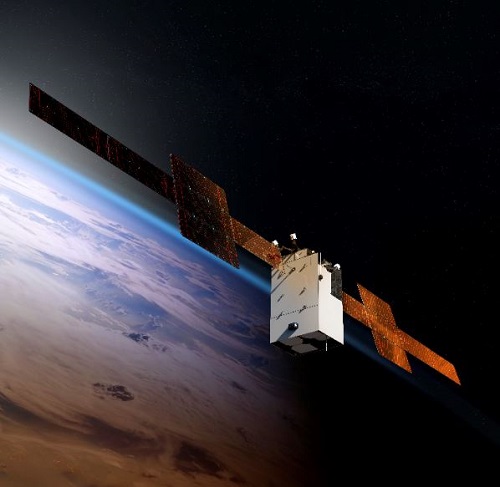Wideband Global SATCOM Satellite provides worldwide, high-capacity communications for deployed air, land, and sea forces.
The system is designed to augment and then replace DSCS X-band frequency service. It also augments the one-way Global Broadcast Service Joint Program Ka-band frequency capabilities and provides a new high-capacity, two-way Ka-band frequency service.
Block I includes: SV-1 (Pacific region), SV-2 (Middle East), and SV-3 (Europe and Africa). Block II satellites are modified to better support the airborne ISR mission and include: SV-4 (Indian Ocean) and SV-5 and SV-6, purchased by Australia in 2013.
The U.S. is partnering with Canada, Denmark, Luxembourg, the Netherlands, and New Zealand on Block II follow-on satellites SV-7 to SV-10.
USAF recently contracted industry to develop anti-jamming capability for tactical users and approved Boeing’s preliminary WGS-11+ design.
Congress added funds beyond USAF’s FY18 request to procure the 11th and 12th satellites. Due to cost, USSF instead opted for the single WGS-11+ platform which offers roughly twice the capability in addition to stronger, more reliable coverage.
USSF is seeking to develop and field a WGS follow-on system and potentially lease commercial SATCOM in the interim.
Contractor: Boeing.
Operator/Location: USSF SpOC; Schriever SFB, Colo.
First Launch: October 2007.
IOC: April 16, 2008.
Design Life: 14 yr.
Launch Vehicle: Atlas V, Delta IV.
Constellation: 10 satellites.
Active Satellites: •SV-1. Block I, launched in 2007; active. •SV-2. Block I, launched in 2009; active. •SV-3. Block I, launched in 2009; active. •SV-4. Block II, launched in 2009; active. •SV-5. Block II, launched in 2013; active. •SV-6. Block II, launched in 2013; active. •SV-7. Block II follow-on, launched in 2015; active. •SV-8. Block II follow-on, launched in 2016; active. •SV-9. Block II follow-on, launched in 2017; active. •SV-10. Block II follow-on, launched in 2019; active.
Dimensions: Based on Boeing 702 Bus.
Weight: 13,000 lb at launch.
Performance: Approx 10 times the capability of a DSCS satellite
Orbit Altitude: Geosynchronous at 22,000+ miles.
Power: Solar arrays generating 9,934 watts.


